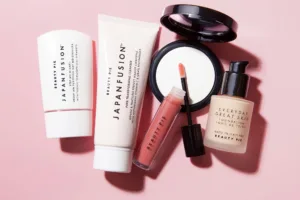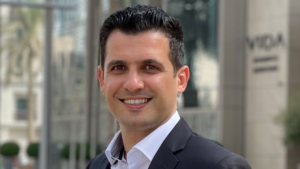Speaking at Retail Week Live 2023, Shira Feuer, Trinny London CMO, explores the elements needed to build a profitable DTC brand.
One of the many things that the experiences of the coronavirus pandemic taught us is that, with the right strategy, direct-to-consumer (DTC) brands can experience a tremendous amount of success. And one brand that has proven that is beauty and skincare brand Trinny London.
Founded in 2017 by Sarah-Jane Duncanson “Trinny” Woodall, who found fame as one half of fashion advisory duo Trinny & Susannah, the brand experienced stratospheric growth of 330% in the first year of the pandemic, and this has only continued.
The brand is now one of Europe’s fastest-growing beauty brands, shipping to 180 countries around the world and employing over 150 people.
“For us, as a new brand, we’ve thought a lot about how we can get cut-through and how people can recognise us. That’s both in how we look and how we feel. So, creating something that’s visibly recognisable. Of course, we have a very well-known face of our brand, but also looking at how we use any visible identifiers,” said Shira Feuer, Trinny London CMO, speaking at Retail Week Live 2023. “In terms of how it feels, we want to make sure that every touchpoint has a similar feeling – whether you’re on the site, interacting with us on social, or seeing us in store.
“It’s really about knowing what you have a chance at being good at. It’s hard to be good at everything. Where does your brand voice make sense? That way you’re going to lean into certain types of content that will work for your customers. So, it’s really thinking about what would make the most sense for you.”
A big part of Trinny London’s success is down to the loyal, online community it has managed to amass. The so-called ‘Trinny Tribes’ are made up of over 100,000 members in more than 30 countries, and the brand has managed to harness the power of their customer advocacy to really drive growth for the business.
A recent example of this happened in Manchester, UK, when the beauty brand held an event in Manchester where 150 women all turned up in brand colours.
“In itself, it doesn’t drive footfall. It’s how you use it. For example, if we’re creating an events series, having that community available means that we can get some people there and hopefully they can bring their friends,” Feuer explained.
“[The Manchester event] led to some really fantastic content… We were a little bit nervous that people wouldn’t turn up, but they came through for us and it was amazing.”
Another key development in Trinny London’s strategy has been how it has shifted from its origins as a digital-first business.
The brand now sells its product in the Fenwick and Harvey Nichols department stores in the UK, and at luxury department store Saks Fifth Avenue in the US – both of which have helped to drive even more brand engagement.
“It’s about really understanding how they work with each other and how the intersection of online and offline works in reality,” said Feuer.
“There’s a lot of great brand marketing out there that you don’t associate with brands. And there’s a lot of brands you remember, but you don’t really have any particular feelings emotionally toward the brands. So, how can you bring those two things together?”












